Långbordet picnic table
Modular Furniture System
Långbordet picnic table was created for connecting spaces and people. The system is expandable, able to follow pavement patterns, extend lengthways, arc into circles, or create curving shapes.
2021–11–10
‘A city for everyone,’ sounds like a nice idea, and one that could even be too good to be true. At first, it seems like a utopian concept, and probably something that many urban dwellers would want to sign up for. But paradoxically, a multifunctional city with an ambition to work for everyone could end up being uninspiring, and somewhat dull.
— We may be taking our obsession for perfect places to the extreme, says Louise Lindquist Sassene from ÅWL Arkitekter in Stockholm. Louise is an architect whose everyday workload adresses issues of inclusivity, social justice and accessibility. She has extensive experience of urban development and community building. Louise believes that social and economic inequalities should be factored into urban planning more than they are currently. Louise has a vision for creating city centres that serve the needs of people travelling in from the suburbs, and that offer affordable amenities for those with lower incomes.
Several cities in Sweden have adopted the "A City for Everyone" slogan. From big cities such as Stockholm and Gothenburg, to smaller communities such as Sunne in central Sweden, the ‘city for everyone’ concept plays an important role in planning and development. In all cases, it’s about accessibility and promoting well-being, and by extension, addressing concerns about safety and security. These issues often work in tandem with construction guidelines and directives for inclusivity and accessibility. In practice, they actually raise the minimum standard to a higher level and form the basis for a democratic city.
The open-air theatre in central Malmö’s Pildammsparken is considered to be a themed playground. It’s a place for everyone, where people of all ages can relax, play, listen to music and watch performances.
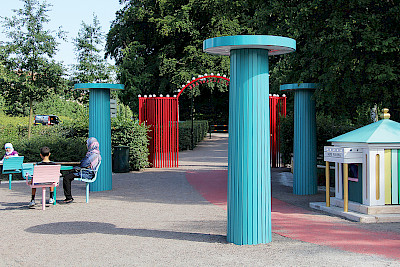
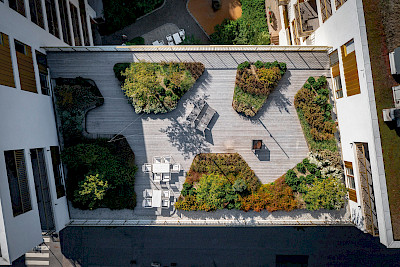
It’s rare for everyone to want the same solution. A topical example of this can be found in Rosendal, a new residential development outside Uppsala. Nola and Swedish landscape architect firm Karavan have worked collaboratively to develop the site, creating spaces for individuals, small groups and large-scale community activities.
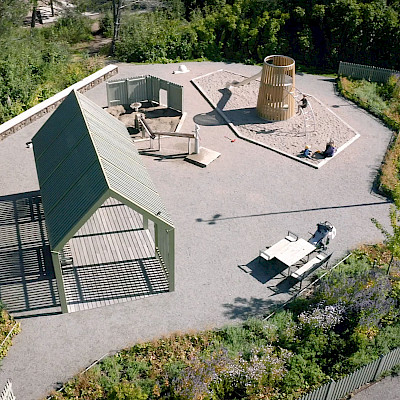
Rosendal. Photo: Christoffer Skogsmo.
“In a city meant for everyone, the concept of diversity is important. That’s why we offer a wide range of diverse products, both in terms of functionality, as well as aesthetics”
— Of course, we want our products to be accessible, safe and designed for use by all people, regardless of their age or level of mobility, says Henrik Edlund, CEO of Nola. “That said, in a city intended for everyone, the concept of diversity is just as important. That’s why we offer a wide range of diverse products, both in terms of functionality, as well as aesthetics. Together, they can contribute to creating places with clear and strong identities.”
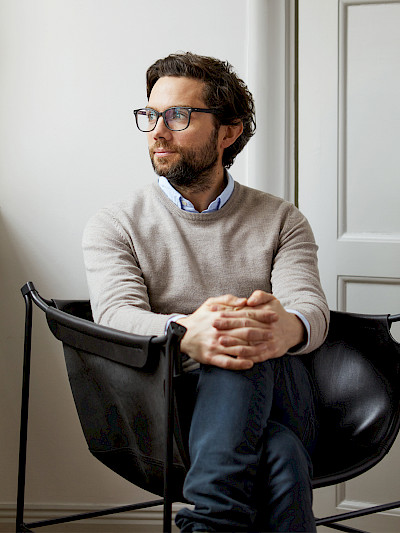
Henrik Edlund, CEO of Nola. Photo: Åsa Liffner
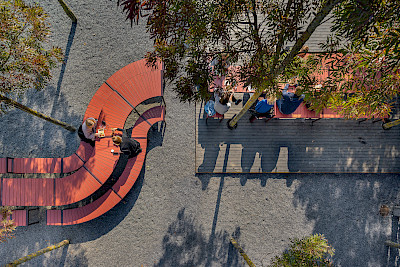
Nola has also contributed to furnishing Hamntorget — a new social meeting place along Årstaviken promenade in Södermalm, Stockholm. The location has been furnished with Långbordet, designed by White Architects.
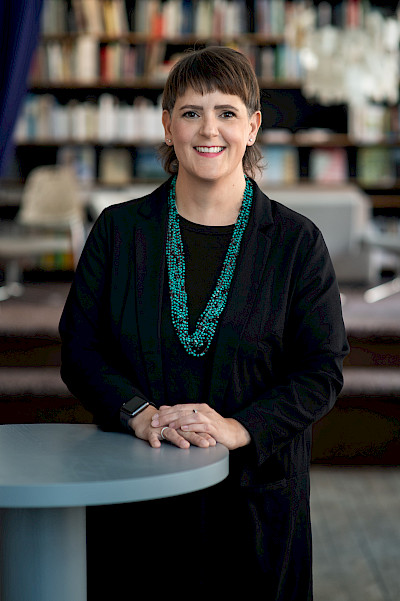
Louise Lindquist Sassene, Architect at ÅWL Arkitekter.
"Of course, when we try to create something for everyone, there’s a risk that the result will be a city for no one."
Creating a city that everyone should be able to get something out of may seem like an obvious goal. But in practice, how do you plan for a wide variety of wishes, needs and opinions? Louise is asking herself the same question. How can we ensure that someone from the suburbs with just ten euros in their pocket has as good, or equal, experience of the city as a resident with a completely different socio-economic situation does? This is a big challenge to face, and one which several cities are trying to resolve in order to live up to the vision for a city for all.
— Of course, when we try to create something for everyone, there’s a risk that the result will be a city for no one, explains Louise. “If you want to draw parallels with the development of learning environments, there are a lot of discussions about efficient use of resources right now. A classroom should be suitable for several different subjects and a range of activities. In practice, this means that architects decode and neutralize the rooms, when we really want them to encourage movement, togetherness and provide a creative platform. It’s a worst-case scenario. We may be taking our obsession for perfect spaces to the extreme.”
Reading between the lines, Louise seems to be saying that the goal for designing places for everyone probably hasn’t been publicly questioned until now. “Consider what I just said about learning environments and apply it to cities,’ says Louise. “If the places become so multifunctional that they can no longer be understood, or no longer attract visitors, what happens then? We need clarity and courage to move forward.”
— Politicians and property developers need to be clear about the intended use of the environments and then dare to stand up for the purpose they have been designed for,’ says Louise. ‘A choice always has consequences, but conscious choices are better than chance. By targeting a particular group, another one may risk being excluded. That can balance out if you find space for that group in a place with different functions or where other activities prevail.”
The municipality of Gothenburg has taken the mandates for inclusivity and varied experiences for different target groups to a higher level. With the Åldersvänliga Göteborg project, an initiative for senior citizens, the planners and developers wanted to create a city that is not only attractive to live in, but also to nice to grow old in. The project was implemented by harnessing senior citizens' experience, knowledge and commitment, and making their voices heard.
The Åldersvänliga Göteborg action plan contains many activities, but something that stands out are the ‘Talking Benches’ integrated into the project. They’re accessible to people of all ages and mobilities, and they broadcast a pre-recorded message encouraging those seated to have a conversation with others around them. The benches are inspired by England's ‘Chatty Benches’ and were installed in popular spots. The purpose is to increase senior citizens' participation in the surroundings and create opportunities for interpersonal meetings in public places. The Talking Benches act as meeting places for spontaneous activities as well as planned ones.
— It is very rewarding to see how our Access bench helps create interesting and attractive urban environments that all people can be part of, says Agneta Stake, Design Management and founder at Nola. The Talking Benches are much appreciated by city residents and attract old and young alike. By looking at differences and specific needs, rather than more general ones, Gothenburg has succeeded in creating an attractive city. A city for all.
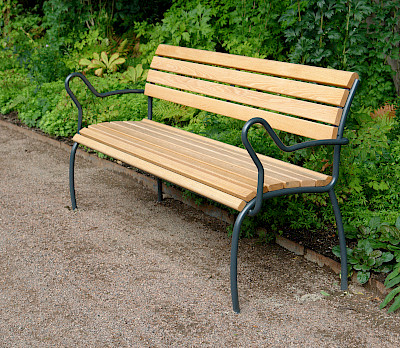
The municipality of Gothenburg has also included Nola’s Access benches in the project. Access was developed in collaboration with Veryda and designed specifically for senior citizens.
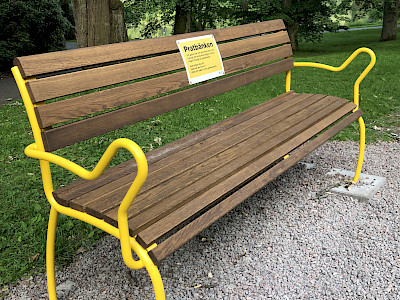
The Talk Benches are highly appreciated and attract both old and young citizens. By looking at differences and specific needs, rather than general ones, Gothenburg has managed to create an attractive city. For everyone.
“In the city itself, and in learning environments, visual impressions, materials and tactility play big roles. Playful, creative places with multiple creative expressions contribute to orientation and can increase security also.”
– Louise Lindquist Sassene
— The physical environment can boost our sense of well-being or dampen how we feel as human beings, Louise explains. “In the city itself, and in learning environments, visual impressions, materials and tactility play big roles. Playful, creative places with multiple creative expressions contribute to orientation and can increase security also, things that are important for all people, she concludes.
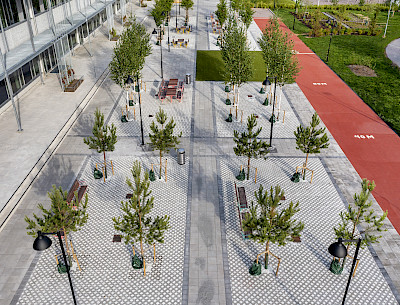
At Fornudden's school in Tyresö municipality, Nola has been involved in creating a new schoolyard with creative and colorful furniture that encourages play and movement. Photo: Jann Lipka.
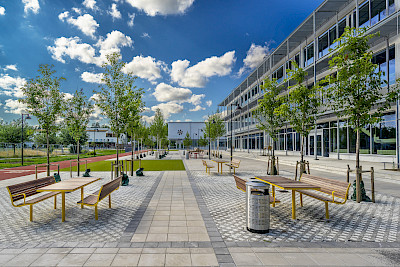
Photo: Jann Lipka.